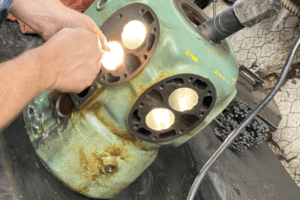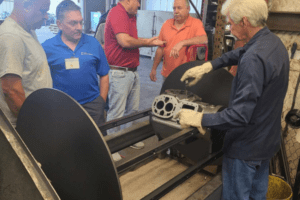The right level of refrigeration at the right time is what makes modern dairy farming possible!
Milk goes through many different processes on its way from the farm to the grocer to the refrigerator at home. Each of these phases requires a specialized refrigeration solution that can meet the tightest tolerances. If refrigeration is off much more than a single degree, the results can be disastrous.
Refrigeration is a key aspect of all these steps:
1. Milk Intake and Preparation
Milk is collected from local farms by the dairy for processing. In the past, collection was limited to the small farms within a few miles’ radius. These days, chilling requirements are much higher because milk may travel for hours before it reaches the dairy.
Milk tankers use stainless steel bodies that enhance insulation. Milk tanker drivers are experts who understand their cargo and can grade the quality of milk. Naturally, the milk is also carefully measured to ensure supply chain efficiency.
2. Pasteurization
It comes as a surprise to many people that not every country pasteurizes all its milk. In the United States and Canada, high-temperature short-time pasteurization (HTST) is used to quickly reduce the number of illness-causing bacteria in a load of milk.
It might sound counterintuitive to think of refrigeration as part of a process that relies on high heat. But milk must be cooled to ideal temperatures both before and after the process. Maintaining full control of the load’s temperature ensures the milk is safe to consume.
3. Water Cooling and Brining
Brining is an indispensable step in making many varieties of cheese. Brined cheese is matured in brine using an airtight or semi-permeable container. Brined cheeses are distinguished by high stability, with inhibited bacterial growth even under warm and humid conditions.
One of the most recognizable brined cheeses is feta, the traditional Greek cheese usually made from sheep’s milk, which owes some of its distinctive flavor to brine. There are dozens of other varieties, many growing in popularity in the U.S. as part of international cuisine.
4. Ripening
Cheese ripens or matures as a result of ripening agents introduced into the milk to foster a particular flavor and texture profile. Cheese ripening is a surprisingly complex biological process and can fail as a result of a mismatch between the ripening agents and the refrigeration conditions used.
Cheese ripening is an extremely slow and expensive project that requires precision from a commercial-grade refrigeration system. An entire batch can be lost due to the failure of the refrigeration compressor. Methods to accelerate ripening using warmer temperatures have been tried, but often produce inferior cheeses!
5. Storage and Distribution
Storage takes place at the dairy, in transit, and – of course – at the grocery store itself.
Grocery stores are the final destination for most cheeses. Because of the huge demand for cooling, they can have electricity needs 2-3 times higher than a comparable commercial office space. Refrigeration can account for anywhere between 40% to 70% of a grocery store’s total energy usage.
When you consider the vast amount of energy that goes into dairy production, the average consumer has it relatively easy. A domestic refrigerator consumes about 100 to 250 watts, or 1-2 kilowatt hours every day. On average, it costs about $150 a year to operate.
By contrast, a typical 10×12 walk-in refrigerator costs around that much every single month, and dairies may need dozens of units to meet the need for refrigerated floor space. Freezers of comparable size cost around 3x as much, or $450 per unit per month. Those costs really add up, especially if a refrigeration compressor is inefficient.
Farms and Dairy Producers Need Reliable Refrigeration Compressors
With all this in mind, refrigeration is one of the biggest operational concerns across the dairy supply chain. Just one refrigeration failure can lead to gallons of lost milk or the destruction of pounds of cheese that might take months to fully mature.
The compressor unit, possibly a Bitzer 6FE-50-2NU, is both the heart and the workhorse of your refrigeration systems. The tough requirements of the dairy environment mean many compressors will wear out and fail before the 10-year average, often as early as seven or eight years of age. Waiting weeks for a replacement is unacceptable.
A remanufactured commercial compressor offers performance that stands up to the demands of the dairy industry. Averaging 30% to 40% cheaper to buy and install than an OEM unit, it can also be delivered weeks faster – giving producers the resiliency they need to deal with the unexpected.












